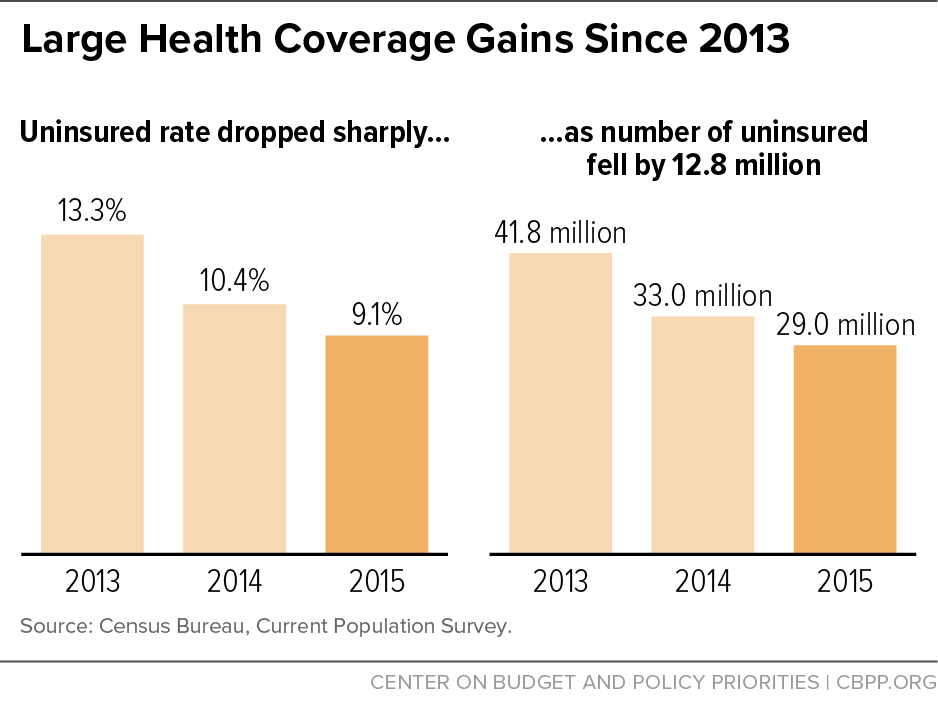BEYOND THE NUMBERS
The uninsured rate fell sharply in 2015, from 10.4 percent to 9.1 percent, today’s Census Bureau data show — the second straight year of sharp declines since health reform’s major coverage expansions took effect in January 2014. It’s also the fifth straight year the uninsured rate has fallen since health reform’s enactment in 2010.
Four million fewer Americans were uninsured in 2015 than in 2014. The share of Americans enrolled in public coverage rose from 36.5 percent in 2014 to 37.1 percent in 2015, while the share with private coverage rose from 66.0 percent to 67.2 percent. The growth in private coverage occurred in direct-purchase coverage (employer-sponsored coverage remained flat), likely reflecting health reform’s subsidies to help people with modest incomes buy coverage through the health insurance marketplaces.
The uninsured rate in 2015 fell by at least 5 percent among every demographic category in the Census data, including gender, age, family income, working status, and race/ethnicity. Certain groups had especially large gains:
- African Americans, whose uninsured rate fell from 11.8 percent to 11.1 percent.
- Non-elderly adults, from 14.3 percent to 8.2 percent.
- Part-time workers, from 18.1 percent to 15.8 percent.
While the Current Population Survey data released today are considered the gold standard for national-level health coverage estimates, they’re consistent with those from the Centers for Disease Control and Prevention’s National Health Interview Survey (NHIS), as well as a number of private surveys, which also show sizeable coverage gains in 2015 on top of the historic 2014 gains.
A growing body of research highlights the significant short- and long-term benefits of health coverage for the uninsured. For example, studies show that gaining Medicaid coverage expands access to health care providers and services, improves health, increases preventive care and screenings, and reduces financial hardship. It also improves children’s long-term educational outcomes and earnings as adults.
Similarly, the Commonwealth Fund finds that more than seven of ten adults with health reform’s marketplace coverage used it to visit a provider or fill a prescription — and 61 percent of them said they couldn’t have gotten this care without the marketplace coverage.

